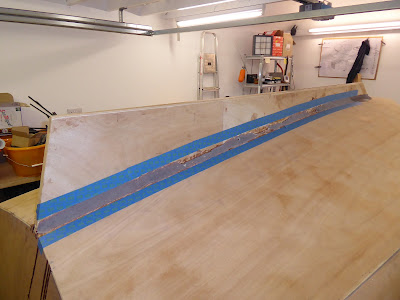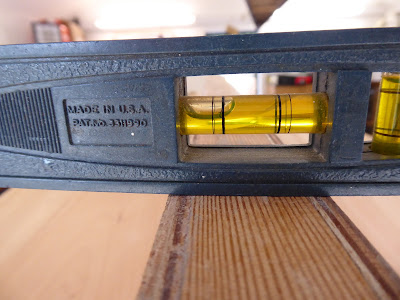It was time to apply fibreglass cloth to the bottom and sides of the hull.
This is a really big deal because it means that the hull is nearing completion!
First I laid a sheet of 'glass over the port bottom panel and keel. Here it is seen from the front.
And here it is seen from the rear, with tools and cloth at hand.
I have left a substantial overlap onto the side panel and the other side of the keel.
Here it has been wetted out with clear resin, using a foam roller. The cat has dropped by to make sure I'm doing things properly.
This is the starboard bottom panel, in place and wetted out.
The 'glass cloth was wrapped around the keel nose block, like this.
That should add some strength for when it inevitably hits something!
Next came the port side panel, dry fitted like this.
It was necessary to hold the panel in place with tape to stop it falling off the boat. I removed the tape when I wetted out the panel, working from stern to bow.
Here is the starboard side panel, similarly hung.
Here is the starboard side panel, wetted out.
Note that there is no overlap onto the transom. I plan to finish it bright so the overlaps will be from the transom onto the side and bottom panels.
And finally here are both sides seen from the front.
You can see that both side panels are a bit too short at the bow. I must have measured incorrectly, which is annoying but not serious. I will make an overlapping patch when I 'glass the transom.
That's it for now! Next job is to make drainage holes in the footwell in readiness for fibreglass.











































